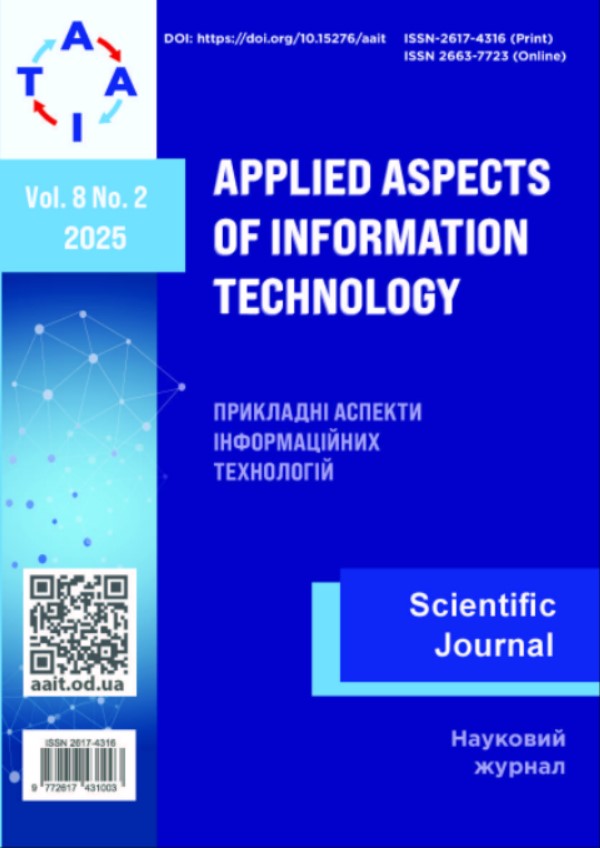Risk assessment and network description modules in a multi-level wireless sensor network risk assessment ontology
Main Article Content
Abstract
Wireless sensor networks have become widely used in industrial automation systems due to their ease of deployment, flexibility, and cost-effectiveness. They provide real-time monitoring, diagnostics, and control of technological processes without the need for complex cabling infrastructure. However, the operation of wireless sensor networks in production environments is accompanied by risks associated with limited energy resources of nodes, the impact of electromagnetic interference, data transmission delays, the inability to guarantee communication stability, and vulnerability to cyberattacks. These threats are exacerbated in complex environments where equipment is located in hard-to-reach places, and the network has limited bandwidth and variable topology. Such conditions require the construction of multi-level structures for network health analysis, risk assessment, and adaptive management. The aim of the research is to develop two functional modules of a multi-level ontology: a risk assessment module and a network description module, that allow for an integrated analysis of threats, vulnerabilities, and wireless sensor network parameters, taking into account their changing state. The research methodology is based on the construction of formalized mathematical models: the network description is implemented through a graph representation with the parameters of nodes, connections, and their dynamics, while the risk assessment is performed using a multifactor model that takes into account the probability of threats, the level of their impact, the criticality of network components, and external risks. The article presents examples of the application of modules based on typical production scenarios that demonstrate the relationship between the structural description of the network and the dynamic assessment of threats. Information from the network description module is used to calculate risks in real time, while the results of the risk analysis affect the dynamic adjustment of network operation parameters. The scientific novelty of the research lies in the integration of two formalized models within a single ontological system of risk-oriented wireless sensor network management. The practical significance lies in the possibility of implementing the proposed approaches in real industrial conditions to increase the reliability, flexibility, adaptability and information security of sensor networks. The proposed system is the basis for building self-adjusting smart networks capable of independently responding to changes in technical condition, threats and environmental parameters.



